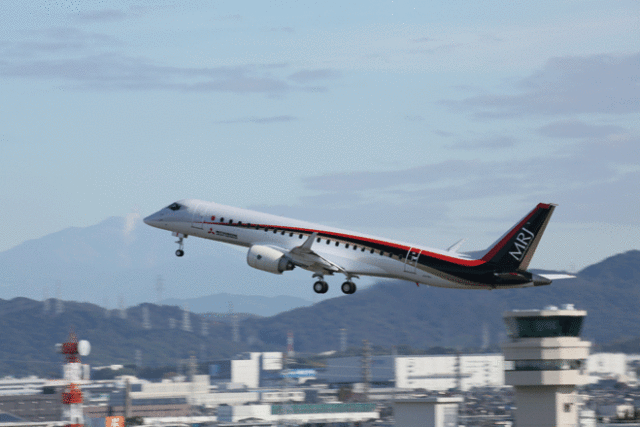
By Tatsuro Hoshina The North American Post
The Japan Business Association of Seattle held a New Year’s seminar on Jan. 11 at Bellevue College featuring Mitsubishi Aircraft’s new regional jet. Kenichiro Honda, Vice President of Seattle Engineering Center, Mitsubishi Aircraft Corporation America, Inc., presented the Mitsubishi Regional Jet (MRJ) project including its current schedule and upcoming test flight in Moses Lake, Wash.
The MRJ is an under-100-seat commercial aircraft. Its first flight took place last November to great success and the flight test in the U.S. is now scheduled for the period between Q4 2016 and Q1 2017. If they can keep on schedule, the first delivery will be held around mid2018.
The Regional Jet (RJ) has a demand for 5,000 planes in the next 20 years, according to Honda. MRJ has 407 offers from airlines based in Japan, North America and Myanmar, and Mitsubishi Aircraft hopes to acquire a half share of this regional jet market.
Advantage of beautiful MRJ design
“Don’t you think this is a really beautiful airplane?” Honda said again and again in the seminar.
The MRJ has a sharp body, optimized for its new engine, compared to rival competitors, including the Bombardier CRJ and Embraer E-Jet E2. The MRJ has been anticipating 20% better fuel consumption and 40% greater noise reduction than today’s equivalent aircraft.
Additionally, the windows of the cockpit are larger than standard, giving the pilot a wider view and improving safety.
There is more room for baggage than in current planes, enabling passengers to carry larger luggage into the cabin. Honda said that this will allow airlines to reduce loading time and improve flight schedules.
Consideration of development delays
Despite its advantages, the MRJ has already been delayed for five years. In the interim, the market has been more competitive as rival companies launch new generation planes. Embraer will launch their new E-Jet E2, which is a model of their conventional jet with a new engine, and some airlines are ordering both the MRJ and E-Jet E2.
Remodeled RJs have the advantage of short-term pilot training, and the delay in the development of the MRJ has caused airlines to be wary of placing new orders.
The future Japanese aircraft industry
Mitsubishi Aircraft plans to develop a 70-seat model in addition to the current 90-seat plane and has announced the potential addition of the stretched MRJ (100 seats). They hope its quality and versatility will give the MRJ an opportunity to garner many more orders in the future.
Japan has been regarded as a country in the background of the aircraft industry, with many companies forming strong partnerships with Boeing. Domestic airplanes including the Kawasaki C-2 cargo, P-1 anti-submarine plane and ShinMaywa US-2 amphibian aircraft are highly recognized. The MRJ has the potential to advertise Japan’s high quality aircraft industry to the world market.
Japan has not produced a commercial airplane since the YS-11. The MRJ is filled with new and innovative technology and carries the hope of the future for the Japanese aircraft industry.




